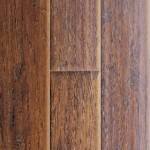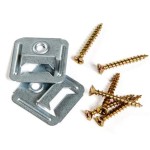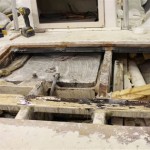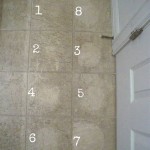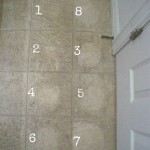Marble Flooring Types: A Comprehensive Guide
Marble flooring has long been synonymous with luxury, elegance, and timeless beauty. Its natural veining, coupled with a polished finish, elevates the aesthetic of any space, from residential homes to commercial establishments. Understanding the different types of marble available is crucial for making informed decisions regarding design, budget, and suitability for specific applications. This article provides a detailed overview of various marble flooring types, exploring their characteristics, advantages, and considerations for installation and maintenance.
Marble is a metamorphic rock formed from the metamorphism of sedimentary carbonate rocks, most commonly limestone or dolomite. During this process, the original rock undergoes recrystallization under intense heat and pressure, resulting in a dense, durable material with distinctive patterns and colors. The variations in color and veining are primarily determined by the presence of mineral impurities within the original limestone. These impurities, such as iron oxides, clay, and silica, impart a wide spectrum of hues and patterns to the marble, making each slab unique.
The selection of marble flooring involves considering several factors, including the intended use of the space, the level of traffic, the desired aesthetic, and the budget. Different marble types offer varying degrees of porosity, hardness, and stain resistance, which directly impact their suitability for particular applications. Proper sealing and maintenance are essential for preserving the beauty and longevity of marble flooring, regardless of the type chosen.
Common Marble Types Based on Quarry Origin
The geographic origin of marble significantly influences its appearance, physical properties, and commercial value. Certain regions are renowned for producing specific types of marble with unique characteristics. Here are some widely recognized marble types categorized by their quarry origin:
Carrara Marble (Italy): Carrara marble, quarried in the Apuan Alps of Italy, is perhaps the most well-known and widely used marble type globally. Its characteristic white or blue-gray background with fine, feathery gray veining makes it a versatile choice for various applications. Carrara marble offers a classic and timeless aesthetic, suitable for both traditional and contemporary designs. It is generally more porous than some other marble types, requiring regular sealing to prevent staining. Within Carrara marble, several variations exist, including Statuario, which is characterized by its brighter white background and bolder gray veining, and Calacatta, prized for its clean white background and thick, dramatic veins.
Calacatta Marble (Italy): Calacatta marble, also sourced from Italy, commands a premium due to its rarity and striking appearance. It boasts a bright white background with thick, bold veins in shades of gold, gray, or brown. These dramatic veins create a visually stunning effect, making Calacatta marble a popular choice for focal points in interior design, such as kitchen islands, fireplace surrounds, and statement flooring. Due to its higher cost, Calacatta marble is often used sparingly to create a luxurious accent.
Statuario Marble (Italy): Statuario marble, another Italian variety, is highly valued for its pure white background and subtle gray veining. It is often considered the epitome of luxury and is frequently used in high-end residential and commercial projects. Statuario marble is relatively rare and therefore commands a higher price point. Its elegant and sophisticated aesthetic makes it ideal for creating a sense of timeless beauty.
Crema Marfil Marble (Spain): Crema Marfil marble, quarried in Spain, is characterized by its warm beige color and subtle veining. It offers a softer and more inviting aesthetic compared to the stark white marbles from Italy. Crema Marfil is a versatile choice that complements a wide range of design styles, from traditional to contemporary. It is often used for flooring, wall cladding, and countertops. Its neutral color makes it easy to pair with other materials and finishes.
Emperador Marble (Spain): Emperador marble, also from Spain, features a rich brown color with irregular veining in shades of white or gold. It offers a luxurious and dramatic look, perfect for creating a sense of warmth and sophistication. Emperador marble is often used in accent walls, flooring, and fireplace surrounds. Its darker color can effectively conceal dirt and grime, making it a practical choice for high-traffic areas.
Nero Marquina Marble (Spain): Nero Marquina marble, a Spanish variety, is characterized by its deep black color and striking white veining. It creates a bold and dramatic statement, ideal for adding a touch of modern elegance to any space. Nero Marquina marble is often used in flooring, wall panels, and countertops. Its dark color provides a dramatic contrast against lighter materials and finishes.
Thassos Marble (Greece): Thassos marble, sourced from the Greek island of Thassos, is renowned for its pure white color and crystalline structure. It is one of the whitest marbles available and offers a clean and minimalist aesthetic. Thassos marble is often used in flooring, wall cladding, and mosaics. Its bright white color can create a sense of spaciousness and light.
Other Marble Types: Beyond these commonly recognized varieties, numerous other marble types exist, each with its unique characteristics. These include, but are not limited to, Verde Guatemala (India), known for its deep green color; Rainforest Green (India), featuring brown and green veins resembling a rainforest landscape; and various colored marbles from Brazil and Turkey.
Different Finishes for Marble Flooring
The finish applied to marble flooring significantly affects its appearance, texture, and slip resistance. Different finishes create distinct aesthetic effects and offer varying degrees of practicality for different applications. Here are some common marble flooring finishes:
Polished Finish: A polished finish is the most common and recognizable marble finish. It involves grinding and buffing the marble surface to a high sheen, resulting in a smooth, glossy surface that reflects light beautifully. A polished finish enhances the natural colors and veining of the marble, creating a luxurious and elegant appearance. However, polished marble can be slippery, especially when wet, making it less suitable for areas prone to moisture, such as bathrooms and kitchens. Polished marble also requires meticulous maintenance to prevent scratches and etching.
Honed Finish: A honed finish provides a matte, satin-like surface with minimal reflectivity. It is achieved by grinding the marble surface to a smooth, flat finish without subsequent polishing. A honed finish offers a more natural and understated look, ideal for creating a relaxed and inviting atmosphere. Honed marble is less slippery than polished marble and is therefore a better choice for bathrooms and kitchens. It is also more forgiving in terms of hiding scratches and etching.
Tumbled Finish: A tumbled finish creates a rustic and textured surface by tumbling the marble tiles or slabs in a drum with abrasive materials. This process rounds the edges and softens the surface, resulting in a worn and antiqued look. A tumbled finish is ideal for creating a casual and natural aesthetic, often used in outdoor spaces, bathrooms, and kitchens. Tumbled marble offers excellent slip resistance and is relatively easy to maintain.
Brushed Finish: A brushed finish is achieved by using wire brushes to create a textured surface with a soft, matte appearance. This finish highlights the natural veining and texture of the marble, providing a tactile and visually interesting surface. Brushed marble offers good slip resistance and is often used in bathrooms, kitchens, and outdoor areas. The brushing process can also enhance the color and depth of the marble.
Sandblasted Finish: A sandblasted finish creates a rough and textured surface by blasting the marble with sand under high pressure. This process removes the surface layer of the marble, revealing the underlying texture and creating a non-slip surface. A sandblasted finish is ideal for outdoor applications, such as patios and walkways. It offers excellent slip resistance and is durable enough to withstand harsh weather conditions.
Factors to Consider When Choosing Marble Flooring
Selecting the appropriate marble flooring requires careful consideration of several factors to ensure that the chosen material aligns with the specific requirements of the space and the desired aesthetic. Ignoring these factors can lead to dissatisfaction and potential problems with the flooring's performance.
Porosity and Stain Resistance: Marble is a naturally porous material, meaning it can absorb liquids and stains if not properly sealed. Lighter-colored marbles tend to be more porous than darker marbles. The degree of porosity affects the marble's stain resistance and its susceptibility to damage from spills and cleaning products. It is essential to seal marble flooring with a high-quality sealant to protect it from stains and moisture penetration. Regular resealing is necessary to maintain the effectiveness of the sealant.
Hardness and Durability: Marble's hardness is measured on the Mohs scale, which ranges from 1 to 10, with 10 being the hardest. Marble typically has a hardness of 3 to 5, making it relatively softer than other natural stones like granite or quartzite. This means that marble is susceptible to scratches and etching from abrasive materials and acidic substances. The durability of marble flooring is influenced by its hardness, porosity, and the level of traffic it will endure. High-traffic areas require more durable marble types and more frequent maintenance.
Maintenance Requirements: Marble flooring requires regular cleaning and maintenance to preserve its beauty and longevity. Routine cleaning involves sweeping or vacuuming to remove dirt and debris, followed by mopping with a pH-neutral cleaner specifically designed for natural stone. Avoid using harsh chemicals, abrasive cleaners, or acidic substances, as these can damage the marble surface. Promptly wipe up spills to prevent staining. Periodic polishing may be necessary to restore the shine of polished marble. Professional cleaning and restoration services can help to address stubborn stains, scratches, or etching.
Budget Considerations: The cost of marble flooring varies significantly depending on the type of marble, its quality, its rarity, and the complexity of the installation. Rare and exotic marble types, such as Calacatta and Statuario, command higher prices than more common varieties, such as Carrara and Crema Marfil. The cost of installation can also vary depending on the size and complexity of the project. It is essential to establish a budget and carefully consider the cost of materials, installation, and ongoing maintenance before selecting marble flooring.
Application and Traffic Level: The intended use of the space and the level of traffic it will experience should guide the selection of marble flooring. High-traffic areas, such as entryways and hallways, require more durable and stain-resistant marble types. Bathrooms and kitchens require marble types that are less slippery and more resistant to moisture damage. Outdoor applications require marble types that are resistant to weathering and temperature fluctuations. The chosen finish should also be appropriate for the intended use and the level of traffic.
Aesthetic Preferences: Ultimately, the choice of marble flooring is a matter of personal preference and should align with the desired aesthetic of the space. Consider the color, veining patterns, and finish of the marble when making a selection. Compare different marble types and finishes to determine which best complements the overall design scheme. Obtain samples of different marble types and finishes to evaluate their appearance in the actual space.
By carefully considering these factors, homeowners and designers can make informed decisions about selecting the most suitable marble flooring for their specific needs and preferences. Proper installation and maintenance are essential for ensuring the long-term beauty and performance of marble flooring, regardless of the type chosen.

12 Types Of Marble Flooring For Your Home A Class

Types Of Marble Finishes Pulycort

Types Of Marbles Classification By Colour Pulycort

What Are The Diffe Italian Marble Types Chandan Marbles

Various Types Of Marble Flooring For Your Home Designcafe

25 Italian Marble Flooring Ideas For Your Home

Top 10 Marble Flooring For Stani Homes Types S And Features Lamudi Blog

Marble Flooring Types Advantages Disadvantages

Italian Marble Types Uses Maintenance Tips

25 Italian Marble Flooring Ideas For Your Home
Related Posts


